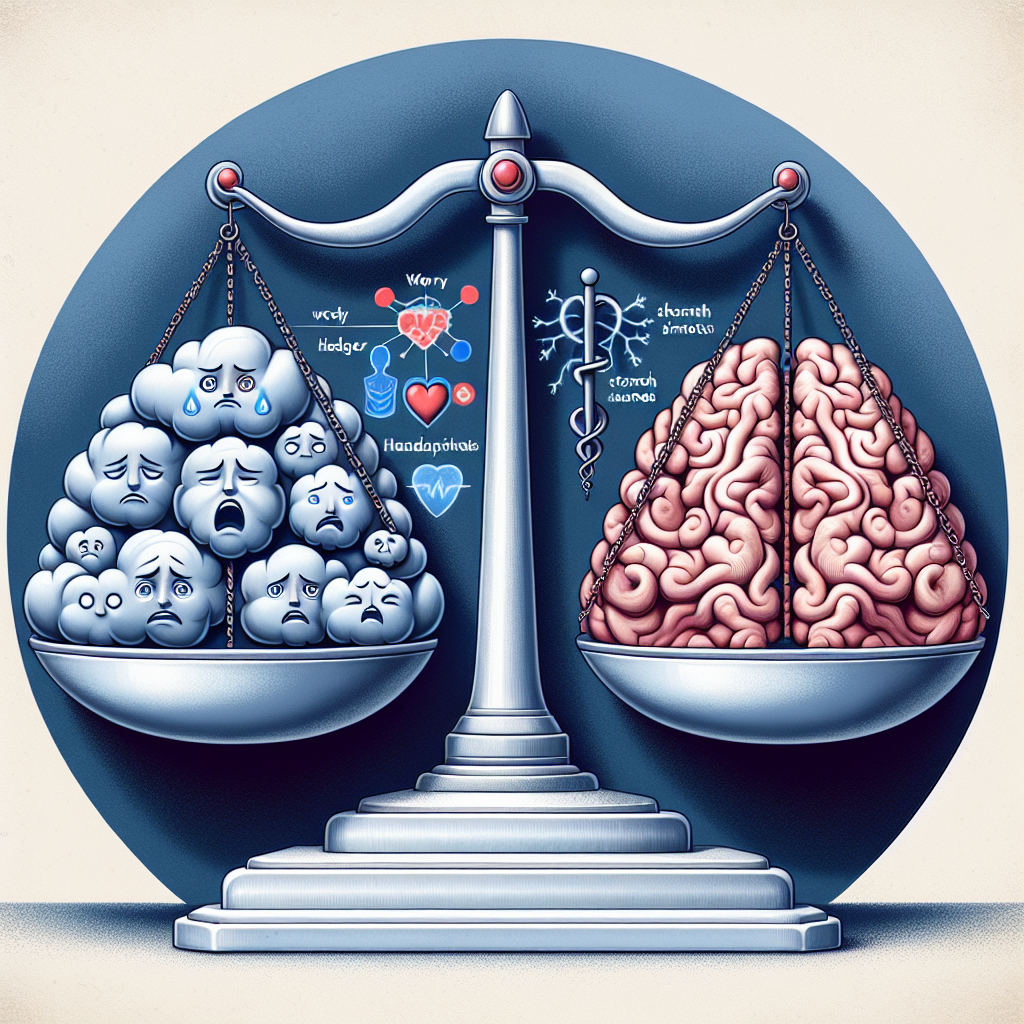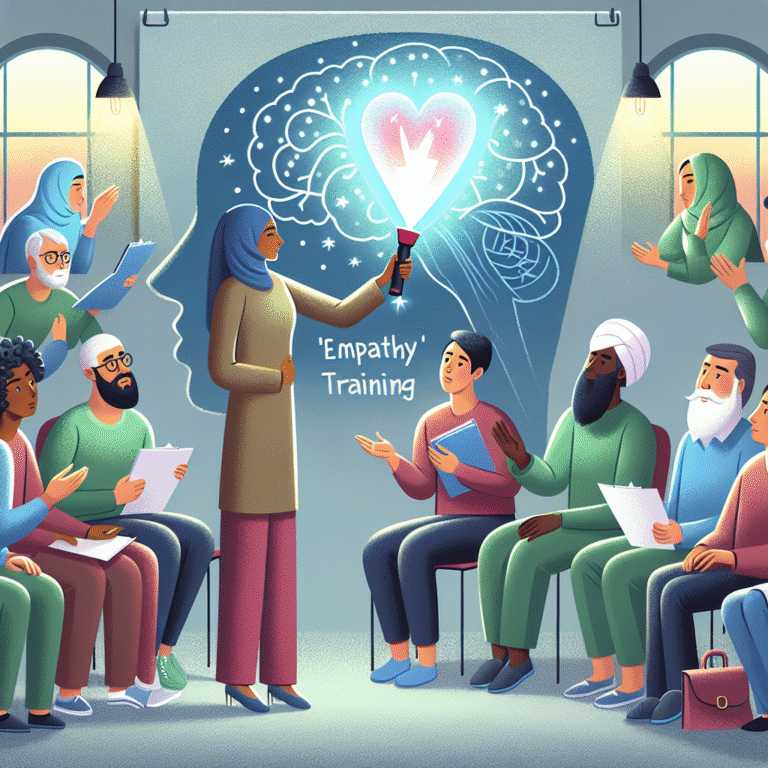
Introduction
Have you ever felt your heart race during a stressful meeting or noticed a headache emerging just when you were facing a deadline? If so, you’re not alone. Many of us experience what is commonly known as psychosomatic symptoms—physical manifestations stemming from emotional distress. Stress and Health: The Link Between Emotions and Physical Symptoms is not just a catchy phrase; it’s a vital concept that shapes our understanding of well-being.
The significance of recognizing the connection between stress and health cannot be overstated. With the modern world pushing us to perform at our peak capacity, understanding how our emotions influence our physical health becomes paramount. Studies have shown a growing correlation between chronic emotional stress and various health complications, including cardiovascular diseases, digestive disorders, and autoimmune conditions.
In this exploration, we will delve deeply into the intricate relationship between stress and health, providing actionable insights and real-world case studies to demonstrate the undeniable link between our emotions and physical symptoms.
Understanding Stress and Its Physical Manifestations
What Is Stress?
Stress is the body’s response to perceived threats or challenges, activating the "fight or flight" mechanism. While acute stress can boost performance and focus, chronic stress can wreak havoc on both emotional and physical health.
The Stress Response: Emotion to Physical Symptoms
When we experience stress, our bodies release stress hormones such as cortisol and adrenaline. While this response is beneficial in short bursts—like preparing for a presentation—it can lead to detrimental health effects if sustained over time. Common physical symptoms of prolonged stress include:
- Headaches
- Muscle tension
- Digestive issues
- Fatigue
- Sleep disturbances
Case Study: The Corporate Executive
Consider Jane, a 45-year-old corporate executive. Over the years, Jane had faced increasing work pressure, leading to chronic stress. She began experiencing frequent migraines, digestive problems, and even bouts of insomnia. After consulting with a health professional, Jane learned that her stress levels directly correlated with her physical symptoms. A treatment plan that included stress management techniques, such as mindfulness and breathing exercises, drastically improved her health.
Analysis
Jane’s case exemplifies Stress and Health: The Link Between Emotions and Physical Symptoms. Her symptoms were not just random occurrences; they were clear indicators of the stress she was enduring. The connection between her emotional state and physical ailments underscores the need for effective stress management strategies in overall health practices.
The Science Behind Stress and Health
Neurotransmitters and Their Role
Stress affects neurotransmitters—chemicals that transmit signals in the brain. Elevated cortisol levels due to chronic stress can disrupt the balance of neurotransmitters like serotonin and dopamine, leading to mood disorders, anxiety, and further health complications.
Physical Health Issues Linked to Chronic Stress
- Cardiovascular Diseases: Chronic stress contributes to hypertension and inflammation, increasing the risk of heart attacks.
- Digestive Disorders: Stress can lead to conditions like irritable bowel syndrome (IBS), ulcers, and excessive weight gain due to hormonal deregulation.
- Immune System Compromise: Prolonged stress can weaken the immune response, making the body susceptible to illnesses.
Table 1: Health Issues Associated with Chronic Stress
| Health Issue | Description | Physical Symptoms |
|---|---|---|
| Cardiovascular Diseases | Heart conditions due to increased BP | Chest pain, fatigue |
| Digestive Disorders | Stress-induced gastrointestinal issues | Bloating, constipation |
| Autoimmune Conditions | Stress affects immune regulation | Joint pain, fatigue |
| Sleep Disorders | Anxiety disrupts sleep cycles | Insomnia, daytime fatigue |
| Mental Health Issues | Anxiety, depression due to stress | Mood swings, irritability |
Emotional Intelligence: A Key to Managing Stress
What is Emotional Intelligence?
Emotional intelligence (EQ) refers to the ability to recognize, understand, and manage our own emotions as well as the emotions of others. Research indicates that higher EQ can buffer against stress-related health issues.
Practical Strategies for Improving Emotional Intelligence
- Self-Awareness: Regularly reflect on your emotional responses and recognize triggers.
- Self-Regulation: Practice mindfulness and meditation to manage impulsive reactions.
- Empathy: Cultivate an understanding of others’ feelings to enhance relationships and lower stress.
Case Study: The School Teacher
Mike, a school teacher, faced immense stress managing a demanding classroom. Initially unaware of his emotional triggers, he often felt overwhelmed. After attending a workshop on emotional intelligence, he learned to practice self-regulation techniques and recognized his emotional responses. Over time, this awareness reduced his stress levels and improved his overall health.
Analysis
Mike’s experience reinforces the idea of Stress and Health: The Link Between Emotions and Physical Symptoms. By improving his emotional intelligence, he not only lowered his stress but witnessed significant physical health improvements as well. Emotional intelligence is a powerful tool in mitigating the adverse health effects of stress.
Building Resilience Through Lifestyle Changes
Healthy Coping Mechanisms
In an age where stress is prevalent, developing resilience is crucial. Here are some actionable strategies for combating stress through lifestyle changes:
- Regular Exercise: Physical activity releases endorphins and reduces stress hormones.
- Balanced Nutrition: A well-rounded diet impacts mood and energy levels, contributing to overall well-being.
- Adequate Sleep: Quality sleep is essential for emotional health and resilience against stressors.
- Mindfulness Practices: Techniques such as yoga and meditation can significantly reduce stress and promote a sense of control.
Case Study: The Balanced Athlete
Emily, a competitive runner, once struggled with work-related stress that negatively impacted her performance. By incorporating mindfulness practices alongside her running routine, she found a balance that not only improved her athletic performance but also her emotional health.
Analysis
Emily’s journey embodies the principle of Stress and Health: The Link Between Emotions and Physical Symptoms. Her proactive approach to managing her stress through healthy lifestyle choices underscores the importance of resilience in fostering better health outcomes.
Psychological Approaches to Reduce Stress
Cognitive Behavioral Therapy (CBT)
CBT is a valuable therapeutic option for those struggling with chronic stress. It focuses on identifying and reframing negative thought patterns that contribute to stress, thereby affecting physical well-being.
Mindfulness and Relaxation Techniques
Mindfulness meditation, deep breathing exercises, and progressive muscle relaxation are evidence-based techniques that help lower stress levels, enhance emotional regulation, and support better health.
Case Study: The Mindful Patient
Sarah, a 38-year-old professional, works in a high-stakes environment. After being diagnosed with high blood pressure due to chronic stress, she engaged in CBT and mindfulness training. Over six months, her blood pressure normalized, and she felt a remarkable increase in her emotional well-being.
Analysis
Sarah’s story illuminates Stress and Health: The Link Between Emotions and Physical Symptoms. Through therapeutic approaches tailored to manage her emotional health, she effectively addressed her physical symptoms, establishing a positive feedback loop fostering health.
Conclusion
Understanding Stress and Health: The Link Between Emotions and Physical Symptoms is essential in today’s fast-paced world. By recognizing the powerful connection between our emotions and physical health, we empower ourselves to embrace proactive measures for improvement.
Whether through lifestyle choices, enhancing emotional intelligence, or seeking psychological support, each step taken toward managing stress is a step toward optimal health. Remember, you have the power to transform stress into a catalyst for positive change. Take charge of your health today!
FAQs Section
1. What are some common physical symptoms of stress?
Common physical symptoms include headaches, muscle tension, fatigue, digestive issues, and sleep disturbances.
2. How does stress impact mental health?
Chronic stress can lead to anxiety, depression, and mood swings, significantly impacting overall mental well-being.
3. What lifestyle changes can help manage stress?
Incorporating regular exercise, balanced nutrition, adequate sleep, and mindfulness practices can help effectively manage stress.
4. Can emotional intelligence really help with stress management?
Yes, enhancing emotional intelligence fosters better emotional regulation and resilience, reducing the overall impact of stress on health.
5. What therapeutic options are available for stress management?
Cognitive-behavioral therapy (CBT) and mindfulness techniques are effective methods for managing stress and improving overall health.
This comprehensive exploration of Stress and Health: The Link Between Emotions and Physical Symptoms serves to educate and empower individuals to take control of their emotional well-being and health. The interrelation between stress and physical symptoms is undeniable, making it crucial for us to recognize and act upon it.











